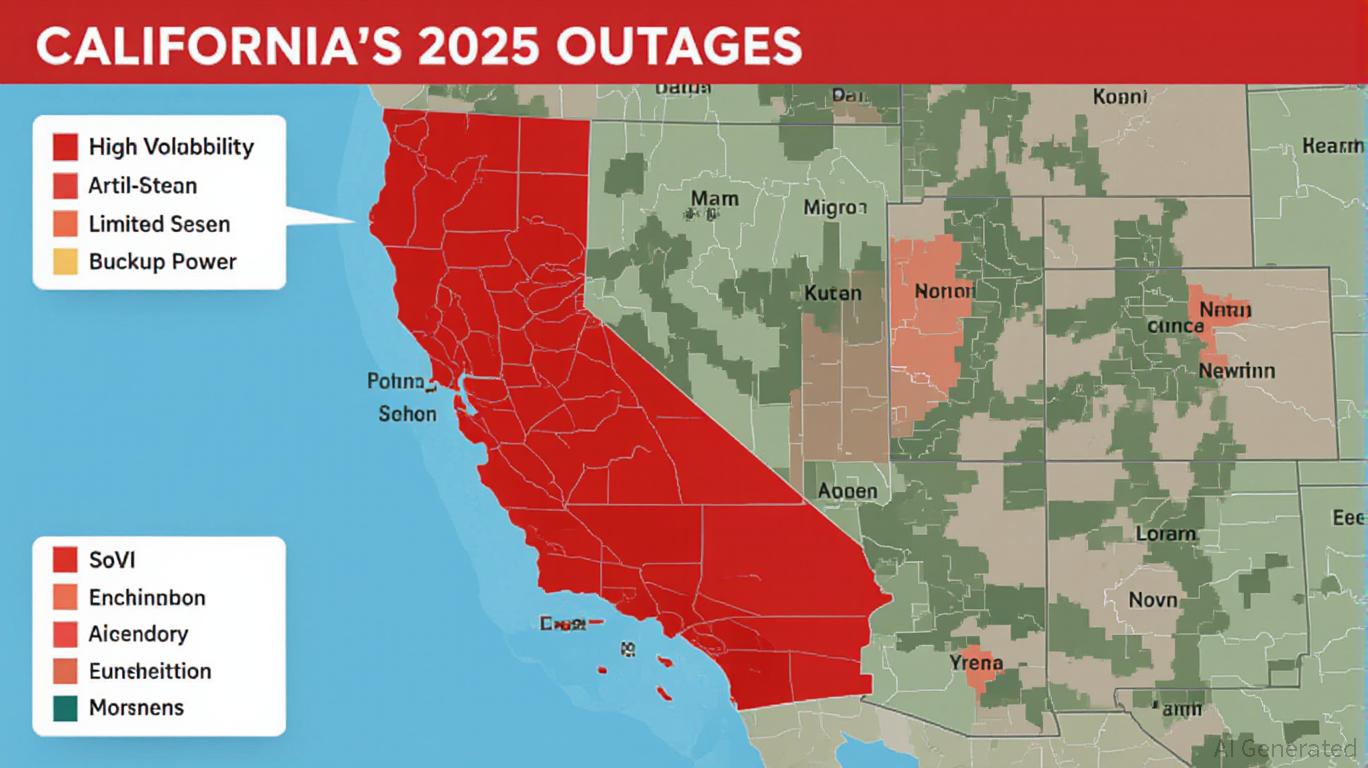The U.S. power grid is at a breaking point. Recent outages in Texas, California, and even San Diego—once a model of proactive grid management—have exposed a system ill-equipped to handle the escalating threats of climate change. From hurricane-driven blackouts in the Lone Star State to wildfire-induced shutoffs in the Golden State, the pattern is clear: aging infrastructure, compounding weather extremes, and fragmented policy responses are creating a perfect storm of risk. For investors, this crisis is not just a cautionary tale but a call to action. The market for grid modernization, renewable integration, and energy storage is poised for explosive growth, and the winners will be those who recognize the urgency of resilience.
The Texas Example: A Grid Unprepared for the Future
Texas’s February 2021 winter storm, which left millions in darkness and claimed hundreds of lives, was a wake-up call. Yet the state’s grid remains unprepared for the new normal. In 2024, Hurricane Beryl and a May derecho left over 3.6 million customers without power, with some areas in Houston still reeling weeks later. The root cause? A distribution network built for the 20th century. Wooden poles, outdated vegetation management, and a lack of winterization have left the grid exposed to both freezing and scorching extremes.
CenterPoint Energy and Oncor, the state’s largest utilities, are now proposing $5 billion in grid hardening, including replacing wood poles with steel and burying critical lines. But these efforts will take years—and the costs will be passed to consumers. For investors, this spells opportunity. Companies like NextEra Energy and Duke Energy, which are investing heavily in grid resilience, are already seeing demand for their services surge. Meanwhile, the need for advanced battery storage to stabilize the grid during outages has created a tailwind for firms like Tesla and Fluence.
California’s Equity Crisis: When the Grid Fails the Vulnerable
California’s outages are less about hurricanes and more about wildfires. In 2025, the Kern River Valley endured over 20 Public Safety Power Shutoffs (PSPS), with some residents losing power for days. While these measures reduce fire risk, they also highlight a deeper issue: the grid’s failure to protect the most vulnerable. Low-income households, renters, and non-white communities are disproportionately affected, with access to solar panels and backup generators lagging behind wealthier, whiter neighborhoods.
The state’s push for renewable energy has not solved this imbalance. While California leads in rooftop solar and EV adoption, its grid remains fragile. A 2024 study in Applied Energy found that non-white households are seven times less likely to have solar panels than white households. This gap is a ticking time bomb for social unrest—and a goldmine for companies addressing energy equity. Startups like Sunrun and Sonnen are expanding community solar programs, while Plug Power is developing hydrogen storage solutions for off-grid resilience.

San Diego’s Blueprint: Proactive Resilience in Action
Not all is lost. San Diego Gas & Electric (SDG&E) has become a case study in proactive grid management. Since the 2007 Witch Fire, the utility has invested $10 billion in wildfire mitigation, undergrounding 315 miles of power lines and deploying AI-driven inspection drones. Its WiNGS risk model quantifies grid vulnerabilities in real time, enabling targeted investments. The result? San Diego has avoided major outages in 2024-2025, even as neighboring regions struggled.
SDG&E’s success is a blueprint for the rest of the country. The utility’s partnerships with the Department of Energy’s Grid Resilience and Innovation Partnerships (GRIP) program, which has allocated $10.5 billion for grid upgrades, underscore the federal government’s growing role in this space. For investors, this means opportunities in AI-driven grid analytics (e.g., C3.ai) and advanced vegetation management (e.g., Trimble).
The Investment Thesis: Resilience as a Commodity
The market for grid resilience is no longer a niche. By 2030, the global smart grid market is projected to reach $60 billion, while energy storage demand could hit 1,000 gigawatts. Here’s how to position your portfolio:
Grid Modernization: Prioritize utilities and tech firms upgrading distribution networks. American Electric Power (AEP) and Dominion Energy are leading in smart grid deployments. Renewable Integration: Bet on companies enabling the transition to decentralized energy. Brookfield Renewable Partners and Pattern Energy Group are expanding solar and wind capacity. Energy Storage: Allocate capital to battery and hydrogen storage innovators. Enphase Energy and Bloom Energy are scaling solutions for both residential and commercial use. Microgrids and Equity Solutions: Support firms addressing energy poverty. Sunrun and Community Power are democratizing access to clean energy. The Bottom Line: Risk and Reward in a Climate-Driven World
The recent outages in Texas and California are not isolated incidents but symptoms of a systemic crisis. As climate change intensifies, the cost of inaction will far outweigh the cost of investment. For investors, the message is clear: resilience is the new dividend. By backing companies that modernize infrastructure, integrate renewables, and address energy equity, you’re not just mitigating risk—you’re capitalizing on the defining infrastructure shift of the 21st century.
The grid is fracturing. But in its cracks lies opportunity.
